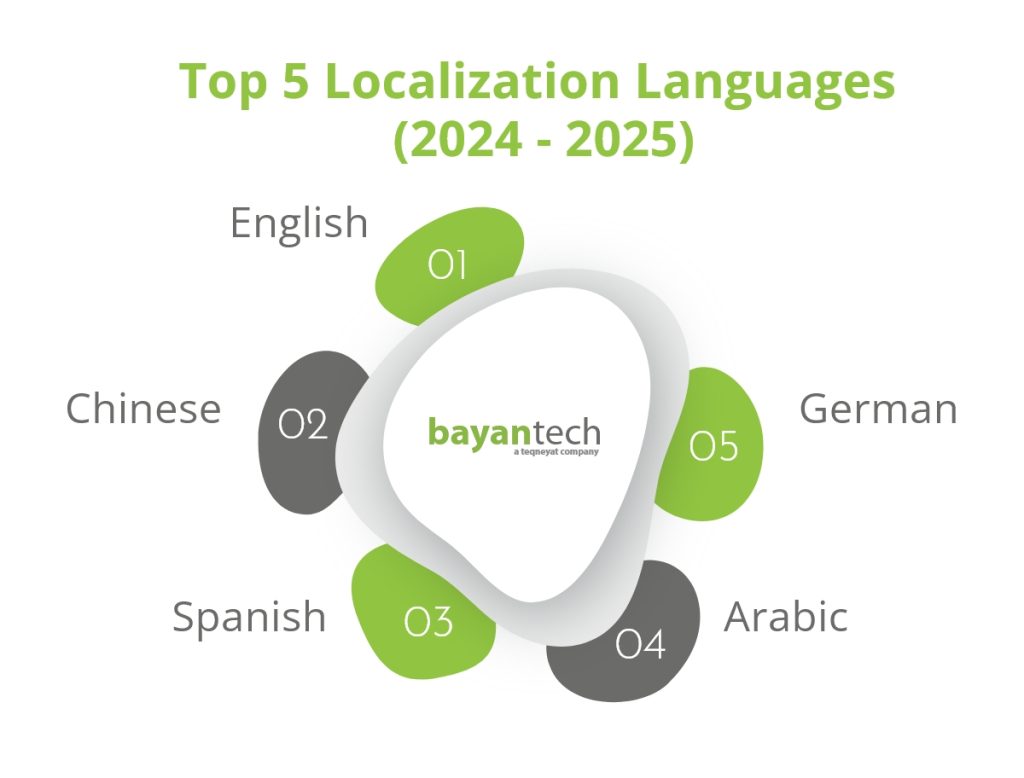So, you’ve decided it’s time to grow your business and reach customers in other countries? Now, the next step is to figure out which countries and languages to focus on.
Selecting the most suitable markets and languages for your business is crucial to building an effective localization strategy. If you make the right choice, you’ll open your business to growth opportunities and increased revenue.
So, which markets should you localize for? That’s what we’re answering in today’s guide.
Keep reading to discover the best localization languages and how to choose the right ones for your business!
How to Select the Right Localization Languages for Your Business?
When it comes to picking the localization languages you’re going to invest in, there are several factors to keep in mind.
At the end of the day, there’s no one-size-fits-all answer to the perfect localization languages. You need to think about what makes the most sense for your business, goals, and resources.
Now, let us share with you the 5 key factors you need to consider when choosing your localization languages!
1. Industry, Business Goals, and Competition
First off, you need to think about your business objectives. If you’re based in North America and looking to expand into Latin America, then your target localization languages can be Mexican Spanish and Brazilian Portuguese.
Also, you must consider the regions ripe for growth in your specific industry. For instance, if you’re a game developer, it makes sense that you would localize in Arabic to dominate the MENA region, the fastest-growing video games market.
Furthermore, studying your competitors is also a smart move to understand market demand. See which languages they’re localizing for and analyze the local competition.
2. Market Size and Growth Potential
Next, take a look at the size of the market for each language you’re considering. How many people speak it? What’s the potential for growth in your industry? And think about the potential return on investment (ROI) versus the cost of translation and localization.
Bigger markets usually mean more opportunities to make money. But don’t forget about smaller, up-and-coming markets that could pay off big time in the future. So, do your market research first, study local demand, and calculate your moves.
3. The Purchasing Power of Target Markets
When selecting localization languages, it’s also crucial to consider the purchasing power of the target audience. Just because a lot of people speak a language doesn’t always mean they have a high spending potential.
Therefore, look for regions with strong economies and consumers who are likely to buy your products/services.
For example, if you’re in the eCommerce industry, China could be an attractive market due to its growing economy and increasing consumer spending. However, be mindful of Chinese cultural nuances and consumer expectations that may differ from those in your home country.
4. Language Complexity and Resources
Don’t forget to factor in the complexity of the potential localization languages. Some languages, like Chinese and Arabic, for instance, can be harder to translate than others. This can take more time and resources. So, make sure you have the right people and tools in place to handle the localization languages you choose.
5. Technological Landscape & Economic and Geopolitical Stability
Factors like technological infrastructure or economic and geopolitical stability can impact your ability to effectively reach and serve customers in those markets.
This is why it’s super important to evaluate the technological landscape, particularly if you plan to offer digital products or services. Countries with a strong tech ecosystem and a digitally savvy population may be more receptive to your localized offerings.
What’s more, look for markets with steady economic growth, low inflation rates, and a stable currency. These factors contribute to a more predictable business environment and increased consumer confidence.
Top 5 Localization Languages in Greatest Demand Globally
1. English
English ranks as the most popular language for localization (and it’s no surprise why.) As the lingua franca of international communication, English has become the default language for businesses looking to expand their global reach.
Adapting your website and digital presence to English is the crucial first step in entering the international market. Moreover, English is the most used language online with almost half of the world’s websites using it as the primary language.
This makes English an obvious choice when selecting localization languages.
2. Chinese
Spoken by more than 1.3 billion people worldwide, Chinese is one of the most powerful localization languages and represents a lucrative market for retail and tech companies.
However, when venturing into the Chinese market, you must consider the linguistic diversity that exists within China and other Chinese-speaking regions.
Mandarin Chinese is the official language of Mainland China and Taiwan, making it the primary choice for localization in these markets. On the other hand, Hong Kong and Macau use Cantonese, so it’s essential to localize into Cantonese for these regions.
3. Spanish
With over 470 million native speakers globally, Spanish is the second most spoken native language in real life and online. Spanish is an attractive target language, particularly for those looking to tap into the Latin American market.
However, businesses must be aware of the Spanish dialect variations. You should make the distinction between European Spanish and Latin American Spanish and localize your content according to the specific region you’re targeting.
This is crucial to ensure that your message is conveyed correctly and resonates with your Spanish-speaking audience.
4. Arabic
Arabic, with more than 373 million native speakers, is the 4th most spoken language worldwide by number of native speakers. Additionally, it’s one of the most popular languages for localization, particularly for companies keen on expanding into the rapidly growing MENA region.
The region’s growing population, increasing purchasing power, and developing economies make it an attractive environment for businesses.
But remember, Arabic is a challenging language due to its complex dialects and regional variations. Also, each Arabic-speaking market has its own expectations and requirements, such as cultural sensitivities and consumer preferences.
Therefore, it’s essential to partner with local experts to build a strong adaptation strategy that fits your target locale and aligns with their precise local needs.
5. German
If you’re looking to gain a foothold in the European market, German is your go-to localization language. With over 96 million people speaking it as their mother tongue, German is the official language in 6 countries including Germany, Austria, Switzerland, and Belgium.
Not only does this make German the most widely spoken native language in the European Union, but it also represents a significant economic powerhouse. Germany is the largest economy in Europe and the third-largest worldwide, making it a promising market for businesses seeking to expand their reach and boost their revenue.
bayantech: Your Reliable Localization Partner
With two decades of experience, bayantech has established itself as a trusted language partner. We provide professional localization and translation services in +120 languages including all Middle Eastern and major European and Asian languages. Based in the heart of the MENA region, we help regional and global businesses expand their reach with smart, cost-effective, and technology-driven localization solutions.
Get in touch today and learn how our solutions can streamline your international communication and drive your business forward!










